During and in the four days immediately following the US Sailboat show in Annapolis, Maryland, the Cruising World judges inspected and sailed on 27 boats vying for recognition. Learn more about the boats in our 2022 Boat of the Year »
Once upon a time, midsize cruisers, 30 to 40 feet, dominated the market, and harbors across the US were filled with what were once considered to be “big” family sailboats. In this size range, a boat could sleep six or seven crew, with some models even offering one or more private staterooms. These boats often offered amenities such as hot and cold pressurized water, a shower and refrigeration, and they were capable coastal cruisers, while some went on extended voyages, including circumnavigations.
Sadly, the proliferation of midsize sailboats—and dozens of American builders launching them—is no longer the case. In fact, in this post-pandemic era, the midsize cruiser is an endangered species; the major overseas production boatyards have largely abandoned the entry-level buyer in lieu of manufacturing bigger boats that address the demand for three, four and even five private cabins, often with en suite heads. But all is not lost for sailors looking for new boats under 40 feet because there are still several companies knocking out quality vessels in well-designed packages that will get you just about anywhere you wish to go. Here’s a trio of craft that fits that bill and, collectively, they made a splash at the U.S. Sailboat Show in Annapolis, Maryland this year.
The “C” in German builder Bavaria’s C38 is for “cruising,” and more specifically, as stated by company reps, family coastal cruising. It’s a sweet spot for the under-40-foot market, and Bavaria has managed to pack a lot of punch in that length overall. Hard chines maximize the interior volume, and the three staterooms in this roomy two-head 38-footer are expansive and impressive. BOTY judge and yacht designer Gerry Douglas noted the wide radius of the bow, which allowed the owner’s cabin below to be pushed far forward, making the most of the interior space.
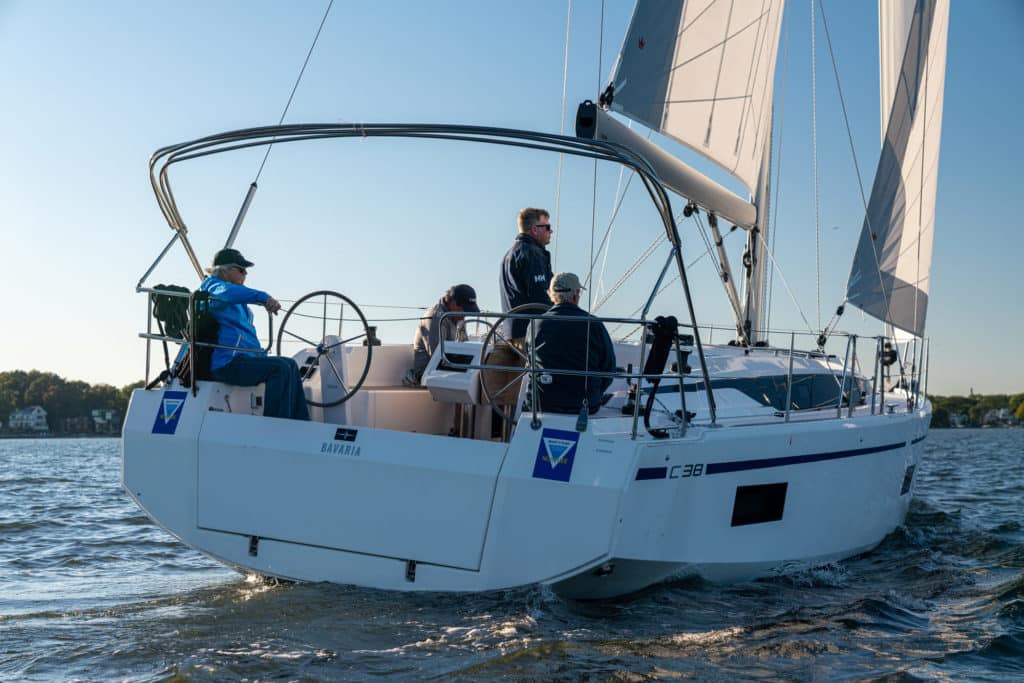
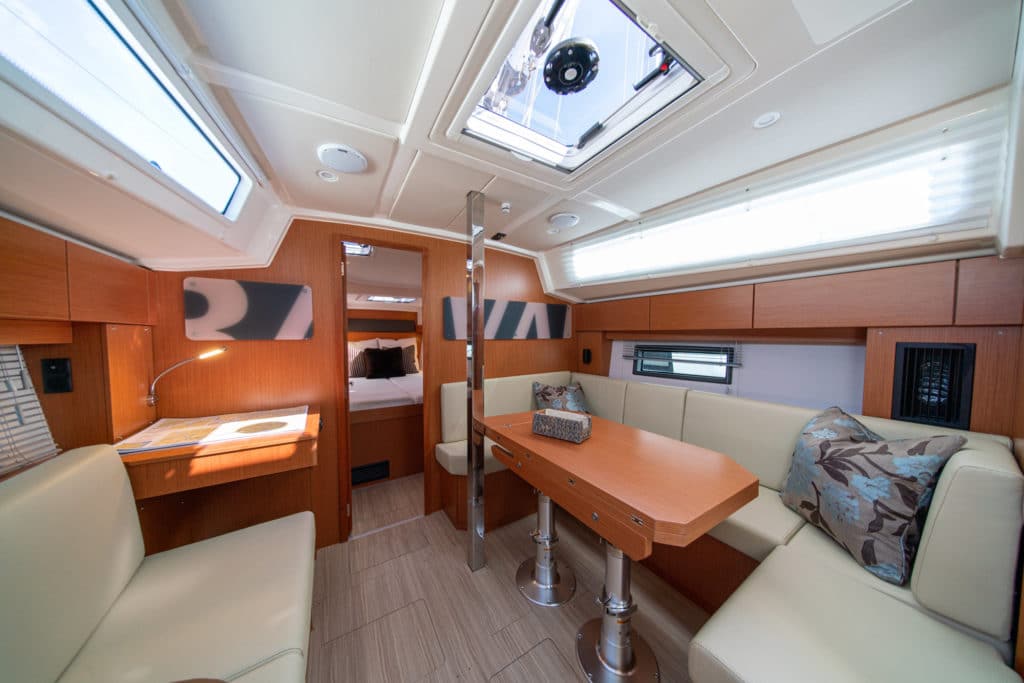
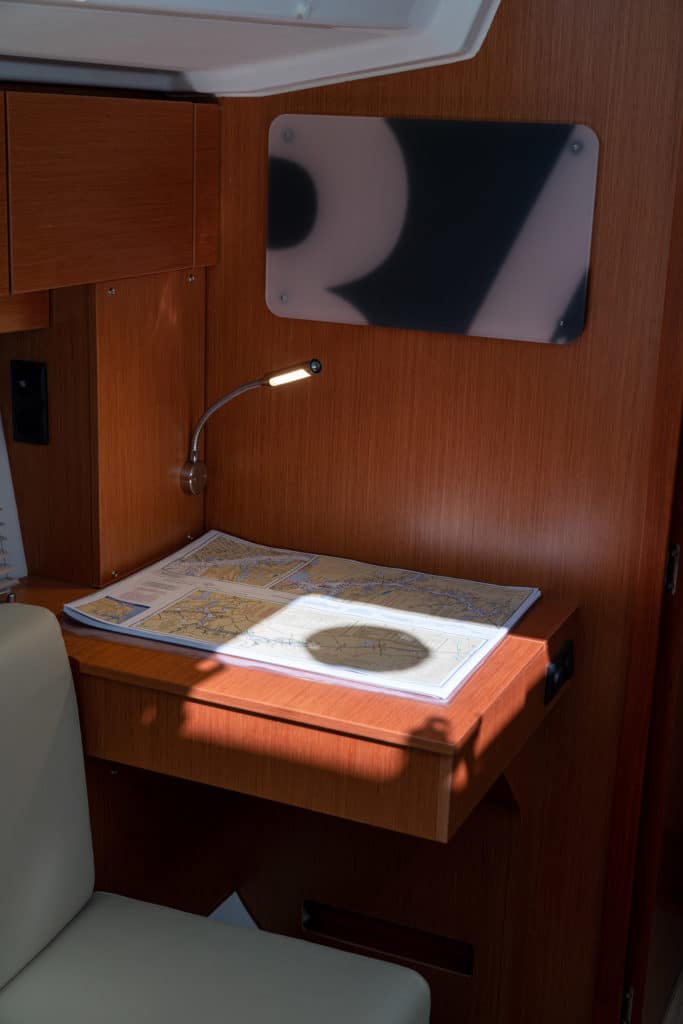
Twin wheels have become the rule, not the exception, in contemporary cruisers, and the Bavaria’s are stationed well outboard, which provides plenty of visibility forward and a nice passage from the cockpit to the drop-down transom and boarding ladder. Sail control lines are led aft to winches at either wheel. The boat our judges sailed had an easy-to-manage self-tacking jib and an in-mast furling main; an over-lapping genoa is available for owners looking for a little more oomph from the rig.
The C38 was designed by Cossutti Yacht Design, a firm known for slippery hulls. Underway, its single rudder felt responsive, and on a close reach, the boat scooted along nicely.
Overall, judge Ed Sherman thought its stated purpose—”a family coastal cruiser”—was an honest and straightforward one.
The Sun Odyssey 380 is the fourth boat in Jeanneau’s line of cruising sailboats to employ the walk-around deck that has earned a host of awards and recognition in Boat of the Year circles. Rather than having to climb over the coaming to reach the deck, the side deck slopes down as it passes the cockpit, so crew can simply walk around either of the two helms and stroll forward. An added bonus is the height of the rear pulpit railings and lifelines as one makes the transition.
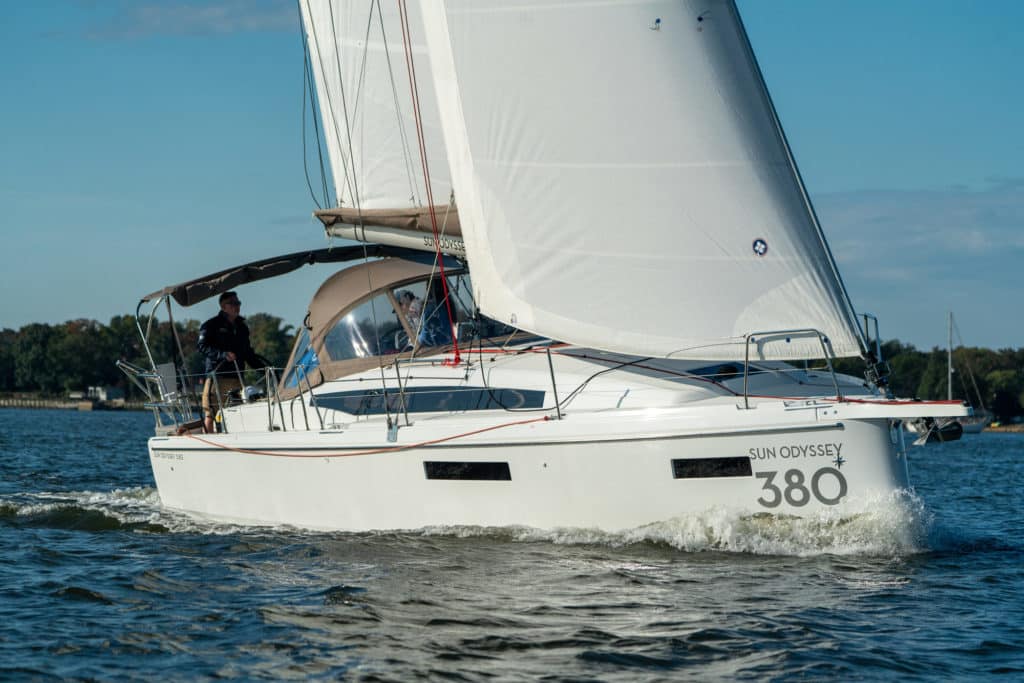
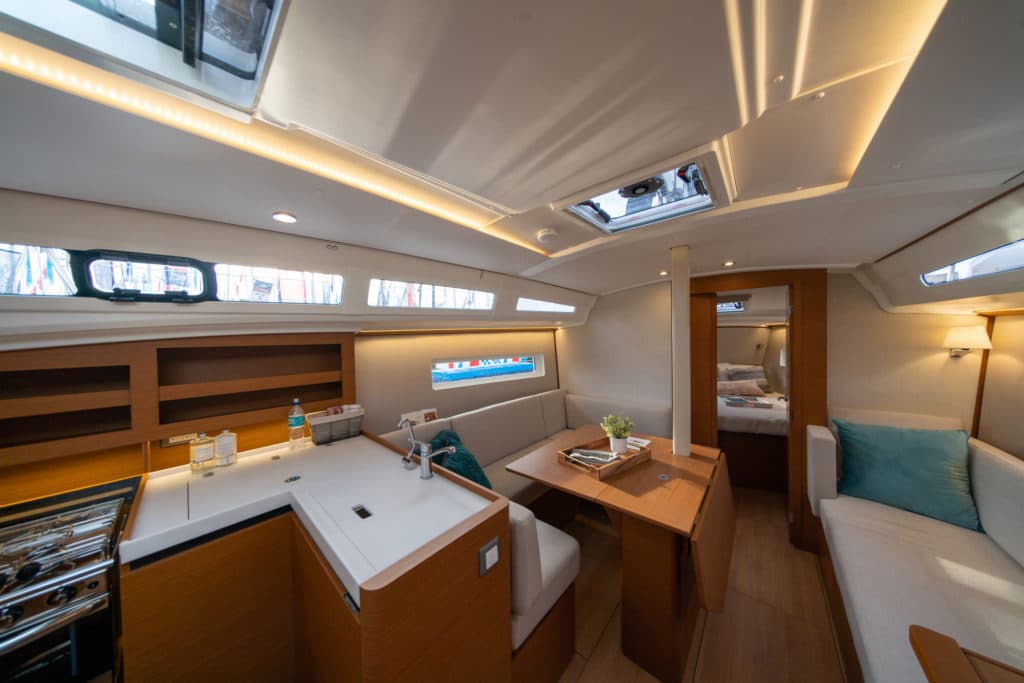
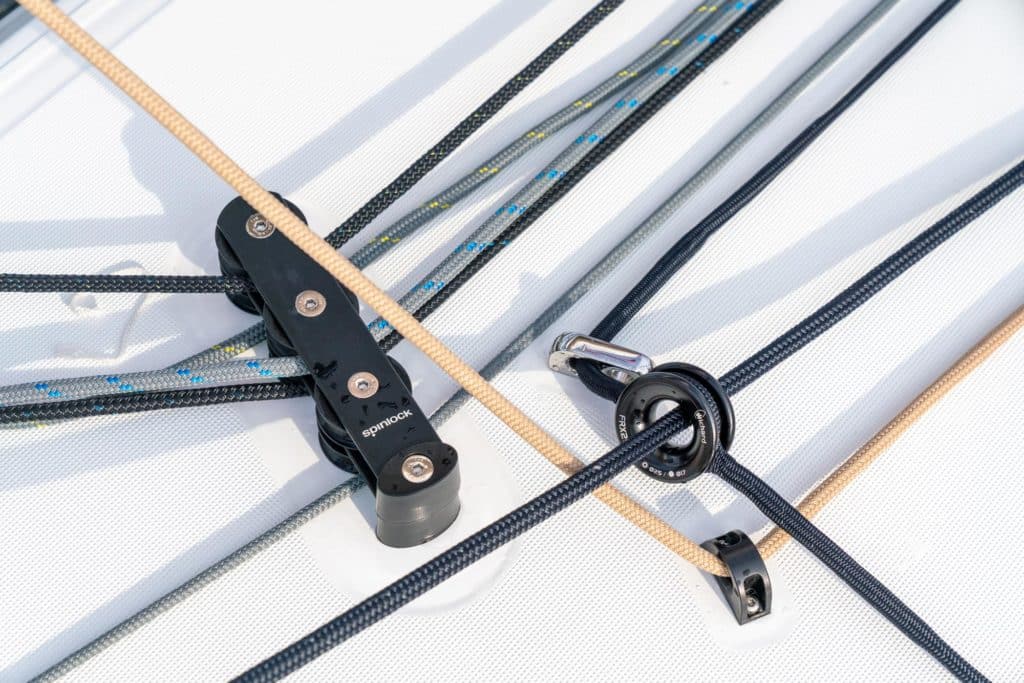
This latest design from performance-oriented French naval architect Marc Lombard combines a host of go-fast features: twin wheels and dual rudders; an integrated bowsprit for setting quick-reaching and running sails; a high-aspect rig that will acquit itself well not only for speedy passages, but also for those inclined to mix it up on the club racecourse.
The boat we sailed had a traditional main and boom sail pouch, which was a refreshing change from the in-mast furling sails many of the other boats in the fleet carried. Rather than fairleads mounted on genoa tracks, the over-lapping jib’s sheets are run through friction rings that can be adjusted up and down, as well as in and out, an arrangement that allows for true fine-tuning of the sail’s shape. The result, well, let judge Tim Murphy weigh in here: “It really was a lovely boat to sail. Boy, and we got out there this morning, the breeze was light and you really, really felt the pleasure of going sailing.”
The 380 was comfortable, as well. Down below, the layout is traditional, with a simple saloon incorporating the galley, dining area and nav station. What’s not broken need not be fixed.
Rounding out this category was a very different boat, the Hallberg-Rassy 340, built in Sweden at a yard renowned for its bluewater cruisers.
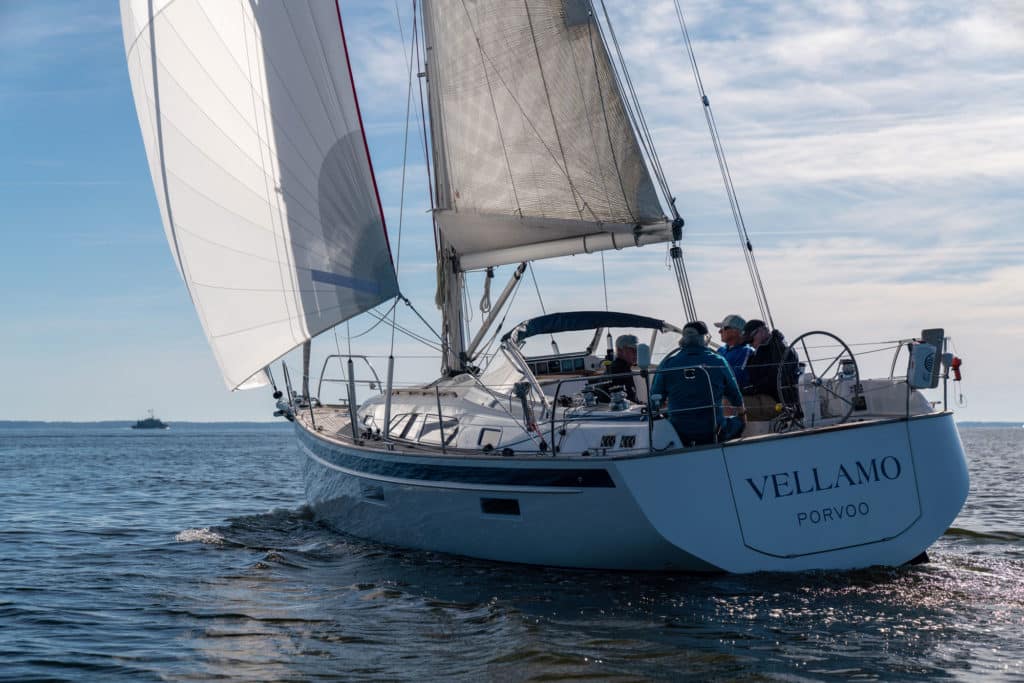
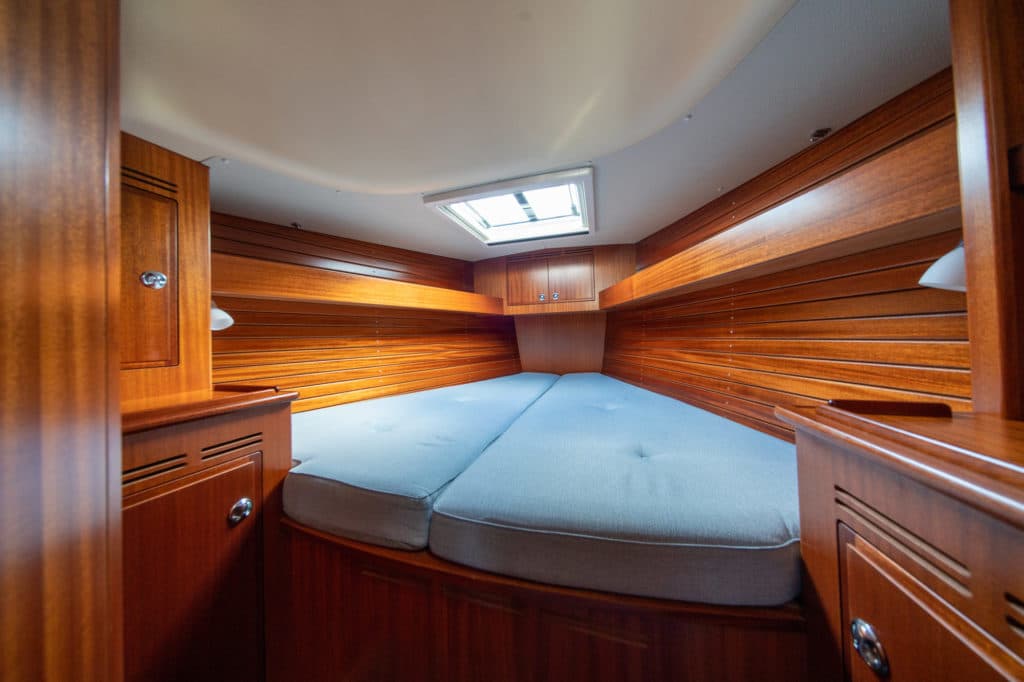
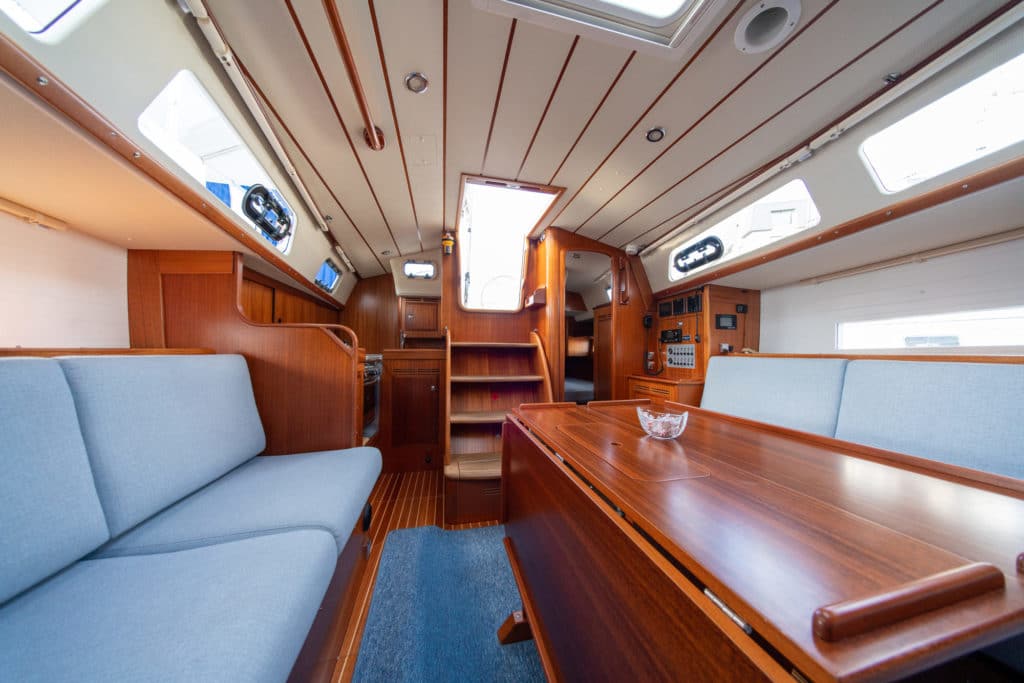
At 80, the great Argentinian naval architect Germán Frers is a living legend, with an unparalleled career designing everything from high-end race boats to superyachts. But Frers is nothing if not versatile, which he proved with this beautiful, twin-wheeled cruiser. Judge Ed Sherman summarized its winning appeal: “We started our sea trial with no wind, then it built slowly. And this boat sailed beautifully. It’s such high quality; it’s high-end, furniture-grade interior versus the Ikea treatment we sometimes see. What an impressive boat.”
The other judges were not far behind in their praise of this twin rudder, twin wheel boat—quite a change of pace for the builder, though it allows for beam to be carried farther aft, creating additional volume for accommodations below.
In describing the design brief, judge Tim Murphy recalled that the importer of the boat described it as being intended for a cruising couple to go out for a weekend, a week or a month. In practical terms, this translates into adequate storage, a workable galley and accommodations that allow a crew to feel secure and stay rested, both underway and at anchor.
Said Murphy, “I love the interior of that Hallberg-Rassy maybe more than any boat in this year’s fleet. I loved being in that space.” And his colleagues did too, which is how the 340 came to be named Best Midsize Cruiser (Under 40’).








